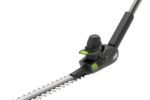How many square feet in a cord of wood

A cord of wood is a stack of logs that measures 4 feet high, 4 feet wide, and 8 feet long. So how many square feet is a cord of wood? The answer is 128.
If you need to know how many square feet are in a cord of wood for some other reason, such as calculating how much space your woodpile will take up, just remember that a cord is 4x4x8. So all you need to do is multiply those numbers together to get the answer: 4 x 4 x 8 = 128 square feet.
Just remember, when it comes to measuring wood, a cord is always 128 cubic feet. If you need to know how many logs that is, that depends on the size of the logs. But if you just need to know how much space a cord of wood takes up, the answer is always 128 square feet.
What is a cord of wood and how is it measured
A cord of wood is a stack of wood that is 4 feet wide, 4 feet high, and 8 feet long. It is measured in cubic feet, so a cord of wood is 128 cubic feet. You can also measure a cord of wood by its weight, which is around 4,000 pounds.
How many square feet are in a cord of wood?
There are 128 square feet in a cord of wood. This is because a cord of wood is 4 feet wide, 4 feet high, and 8 feet long. To find the square footage, you would multiply the length by the width. So, in this case, you would multiply 4 feet by 4 feet to get 16 square feet. Then, you would multiply 16 square feet by 8 feet to get 128 square feet.
How many square feet are in a cord of wood
Most people know that a cord of wood is 128 cubic feet, but what does that really mean? How many square feet is that in a house? In this post, we will take a look at the different ways to measure wood and how to figure out how much you need for your home. We will also discuss the cost of heating with wood and some of the pros and cons of using this renewable resource.
As we stated before, a cord of wood is 128 cubic feet. This is the standard measure for firewood in the United States. The term “cord” actually comes from the word “chair”, which means that a cord was originally defined as the amount of wood that could be used to make one wooden chair. Nowadays, a cord is simply 128 cubic feet of any type of wood. The measurements of a cord are 4 feet wide x 4 feet tall x 8 feet long. Most firewood is sold by the half-cord or full-cord, but you can also find it by the truckload (usually 2-3 cords) or by the tractor trailer load (usually 10-12 cords cords cords) .
So, how many square feet are in a cord of wood? If you were to stack the wood in a neat pile, without any spaces in between the pieces, it would cover an area of 64 square feet. This is because 4 feet x 4 feet = 16 square feet and 16 square feet x 8 feet = 128 cubic feet. However, when you factor in the gaps between the pieces of wood, the coverage area decreases significantly. In reality, you can expect to get about 30-40% less coverage than the 64 square foot figure. This means that a cord of wood will actually only cover an area of around 20-25 square yards.
Now that we know how many square feet are in a cord of wood, let’s discuss the cost of heating with wood. The average cost of a cord of wood is $120-$200, depending on the type of wood and where you live. The most common type of firewood is hardwood, which includes species such as oak, maple, and cherry. Hardwood is more expensive than softwood because it burns for a longer period of time and produces more heat. Softwood, such as pine and fir, is less expensive but it burns quickly and doesn’t produce as much heat. In general, you will want to use hardwood if you are going to be burning your fire for a long period of time or if you need a lot of heat.
There are some pros and cons to using wood as a primary source of heat for your home. On the positive side, wood is a renewable resource that can be replenished relatively quickly. In addition, burning wood is much more efficient than burning fossil fuels, such as coal and oil. Wood also produces a pleasant smell when it is burned and it creates a cozy atmosphere in your home. On the downside, heating with wood can be expensive and it requires a lot of work. You need to have a place to store the wood, you need to cut and split it, and you need to haul it into your house. In addition, you need to clean out your chimney on a regular basis to prevent fires.
If you are considering using wood as your primary source of heat, it is important to weigh the pros and cons carefully. Wood is a great renewable resource that can be used to heat your home, but it requires a lot of work and it can be expensive. You need to decide if the benefits outweigh the costs before you make the switch.
What are the most common uses for a cord of wood
A cord of wood is a stack of logs that are 4 feet wide, 4 feet high, and 8 feet long. The standard measurement for a cord of wood is 128 cubic feet. Most people use a cord of wood for heating their homes in the winter. But there are other uses for a cord of wood, too. Here are the most common ones:
-Heating your home in the winter
-Firewood for a campfire
-Smoking meat
-Making charcoal
– Kiln drying lumber
How much does a cord of wood cost and where can you buy one
A cord of wood is a stack of wood that is 4 feet wide, 4 feet high, and 8 feet long. It usually contains 16 cubic feet of wood. A cord of wood costs around $100-$120, depending on where you live. You can buy cords of wood at most home improvement stores or lumberyards.
Some people might also be interested in how many square feet are in a cord of wood. A cord of wood is 128 square feet. This means that if you were to lay out a cord of wood, it would be 4 feet by 32 feet (8 squared).
What are the benefits of using a cord of wood for heating your home
Heating your home with a cord of wood has many benefits. Not only is it an environmentally-friendly way to heat your home, but it is also a cost-effective way to do so. In this blog post, we will explore the benefits of using a cord of wood for heating your home.
Heating your home with a cord of wood is an environmentally-friendly way to do so. Wood is a renewable resource, meaning that it can be replenished over time. Using a cord of wood to heat your home is also a more efficient way to heat your home than using other fossil fuels, such as natural gas or oil.
Another benefit of using a cord of wood for heating your home is that it is a cost-effective way to do so. The initial cost of purchasing a cord of wood may be higher than the cost of other fuel sources, but over time, the cost of heating your home with a cord of wood will be less than the cost of heating your home with other fuel sources. In addition, the cost of wood is not subject to the fluctuations that often occur in the price of other fuel sources.
If you are considering heating your home with a cord of wood, there are many benefits to doing so. Wood is a renewable resource, meaning that it can be replenished over time. Using a cord of wood to heat your home is also a more efficient way to heat your home than using other fossil fuels, such as natural gas or oil. In addition, the cost of heating your home with a cord of wood will be less than the cost of heating your home with other fuel sources over time.
How many square feet in a cord of wood
Heating your home with a cord of wood is an environmentally-friendly way to do so. Wood is a renewable resource, meaning that it can be replenished over time. Using a cord of wood to heat your home is also more efficient than using other fossil fuels, such as natural gas or oil. In addition, the cost of heating your home with a cord of wood will be less than the cost of heating your home with other fuel sources over time.
A cord of wood is a stack of wood that is 4 feet high, 4 feet wide, and 8 feet long. This equals 128 cubic feet. Most firewood is sold by the cord or by the half-cord. The average cost of a cord of wood is $180.
If you are considering heating your home with a cord of wood, there are many benefits to doing so. Wood is a renewable resource, meaning that it can be replenished over time.






